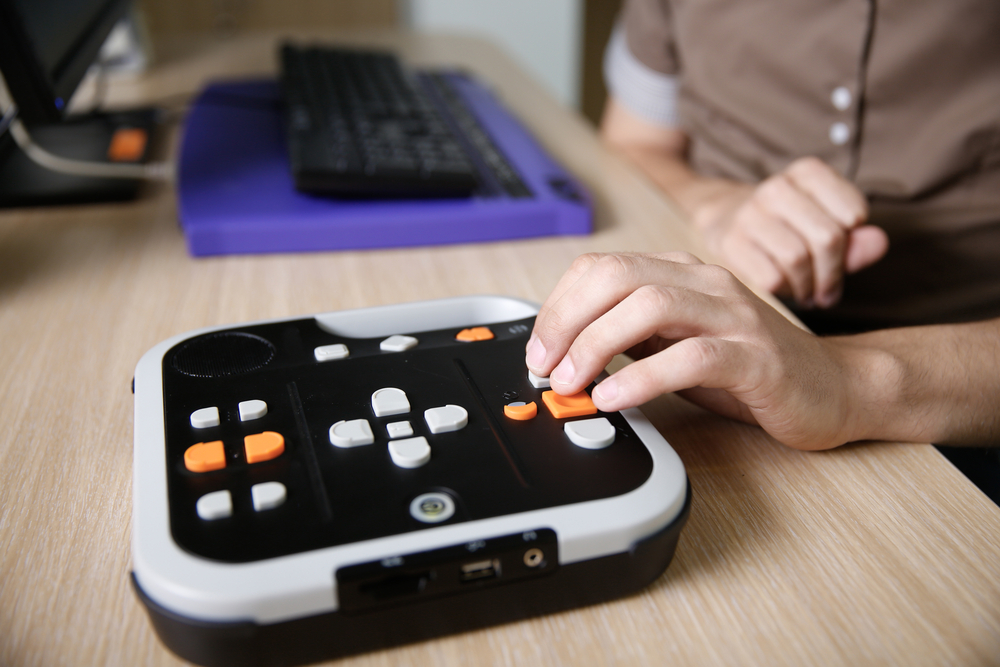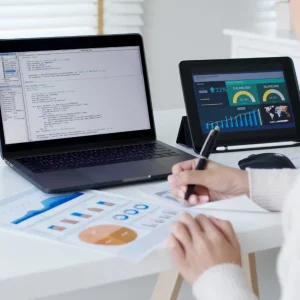
More than a billion people around the globe need assistive technology, according to the World Intellectual Property Organisation (WIPO), but currently only one out every ten has access to it. There is hope that advances including digital manufacturing will make assistive technology more accessible, but there is still a need to include users in the creation process and to break assistive technologies out of their current ‘silo’. As the pandemic has shown, more accessible technology can improve the experience for everyone.

Reducing the cost of assistive technology
Assistive technology is defined by the World Health Organisation as services and systems that can improve a person’s independence and well-being. Although it is often associated with disabled and elderly people, most of us will use it at some point in our lives. Common examples include wheelchairs, hearing aids, speech recognition software or closed captioning, but the term encompasses a vast range of solutions serving many different needs.
Professor Catherine Holloway, academic director at UCL’s Global Disability Innovation Hub (GDI Hub), says that the number of people requiring assistive technology is likely to be higher than the one billion estimated by the WIPO. And across the world, she says, unequal access is emerging between rich and poor, despite access to affordable assistive technology being a human right enshrined in the United Nations Convention on the Rights of People with Disabilities. “If we’re not careful,” she says, “it’s going to be the fact that no matter what happens, poor people won’t get assistive technology; either that or they’ll get left behind.”
In the UK, there are schemes that provide funding for assistive technology, but not everyone qualifies, says Piers Wilkinson, higher education policy and partnerships lead at social enterprise Diversity and Ability and commissioner at the Disabled Students’ Commission. “Unless you have external funding of some sort, whether if you’re a student or a worker through governmental schemes of DSA [Disability Students’ Allowance] or access through work, it can be very out of reach,” they say.
Unless you have external funding of some sort or access through work, [assistive technology] can be very out of reach.
Piers Wilkinson, Diversity and Ability
Wilkinson is hopeful, though, that the costs of assistive tech will fall substantially in the coming years. This will open opportunities that are currently closed to disabled people, they add. “We won’t have to worry about choosing a job based on who the employer is but more on what the job is. Similarly, with education opportunities, we still choose universities based on how accessible they are.”
Digital manufacturing presents an opportunity to make assistive technology more affordable, says Holloway. For example, AT2030, an assistive technology investment programme led by the GDI Hub, works with Motivation, a UK charity that provides high-quality, affordable wheelchairs to low and middle-income countries. The charity has developed a device that takes parametric measurements, such as the seat height or angle, without the need for an occupational therapist, although clinicians supervise the process. The wheelchairs are then built in region using a mixture of 3D printing and local materials, avoiding export duties.
'Nothing for us without us'
But there are other hindrances to assistive technology besides cost. One is that technology producers often fail to involve disabled people in the design and development process, Wilkinson argues. “I think that a lot of the technology is built and designed at the moment without us having a really key stakeholder or even allowing us to design ourselves.”
This can result in unhelpful or even harmful technology. In an example cited by the US National Academy of Sciences, a man who had lost both arms in an accident was given sophisticated robotic arms. However, the mechanical limbs were heavy and uncomfortable and did not meet the needs of the user, who wanted the independence to go out to restaurants and drink on his own unassisted. Although a long straw would have been a better assistive technology than the robotic arms, its designers did not take the man’s needs or input into consideration.
Disability advocate and design strategist Liz Jackson has a term for this kind of product – a ‘disability dongle’: “A well-intended, elegant, yet useless solution to a problem we never knew we had.” These ‘disability dongles’ are most often conceived of and created in design schools or innovation agencies, Jackson adds.
Technology companies often engage learning disability charity Mencap for help with developing products, says project lead for assistive technology Tracey Richards. But for this collaboration to succeed, the co-creation process must directly involve people with a learning disability, she says – something that is at the core of the charity’s technology strategy. “I think the most important thing that Mencap wants to do is to co-create with people with learning disabilities themselves and let them decide what that future [assistive technology] might or might not be for them,” says Richards.
A positive example is Connected Living, an independent living app developed by Vodafone that was designed and co-created with people with a learning disability. The app pilot, which is still in development, facilitates communication for people who are non-verbal or have a speech impediment. On one occasion, someone who is virtually non-verbal was able to articulate verbally for the first time how he loved his father. “It wasn’t actually his own voice, clearly, but it was him actually saying it out loud,” explains Richards.
Wilkinson hopes that the ‘disability dongle’ will be put aside in the coming years and those responsible for creating and developing software and technology that is built for disabled people, particularly within the augmentative alternative communication sector of assistive technology, will involve users at every stage of the creation process.
Assistive technology innovation: breaking the siloes
Another obstacle to the development of assistive technology is the fact that it is perceived as a distinct category from other user-facing tech. While there has been increased investment in assistive technology, especially since the pandemic, it is still often viewed as ‘add-on’ to mainstream products. “We believe that assistive tech needs to be integral to the design of products and services, not an add-on, thus opening up the world to disabled people and providing the world of tech with their diverse insight,” says Marie-Clare Fenech from Tech for DisAbility, part of the Tech London Advocates network.
We believe that assistive tech needs to be integral to the design of products and services, not an add-on.
Marie-Clare Fenech, Tech for DisAbility
The pandemic has shown the folly of this siloed thinking, says Wilkinson. Software features that once were regarded as exclusive for disabled people, such as closed captions in video calls or screen reader-friendly websites, have become mainstream during lockdown. “As the pandemic has highlighted, everyone can really benefit from assistive [technology],” they say.
Indeed, the distinction between assistive and mainstream technology is eroding, argues Holloway, with accessible products such as Microsoft’s Seeing AI app, which helps blind and partially sighted people identify text and objects, or Amazon’s audiobook platform Audible becoming mainstream.
As the world enters a new phase, in which even more of our work and human interaction is mediated by technology, ensuring those technologies work for a range of abilities, preferences and perceptual modes will only increase its value. Making technology inclusive, argues Wilkinson, is “becoming essential if you want to be at the forefront of [technology] or just … to be able to have employees working from home".






